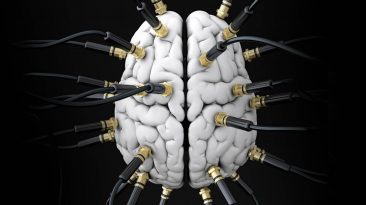On average, over 8000 people die each year in the U.S. because they can’t get an organ transplant. What if we could actually rebuild our failing organs? That possibility, of creating anything you want from home, could be just around the corner with a 3D printer.
What is 3D printing? What is 3D bioprinting? How many of us are using 3D printers?
Could we become superhuman and live forever? Right now our bodies face the possibility of breaking down, but what if we could wipe out that risk by creating medical devices that can help us, like hearing aids, pacemakers, or new dentures. Imagine if we could actually bio-print our vital organs.
First off, what is 3D printing? 3D printing is a manufacturing process that takes a digital file known as computer-aided design or “CAD” and brings that 3D model to life.
The most common 3D printing process is known as “fused deposit modeling” or “FDM.” It works the same way as your standard inkjet printer, except instead of ink, it uses thermoplastic material, which gets pushed through a nozzle, like a hot glue gun.
A spool of filament is loaded into a printer and gets heated up. It keeps layering 2D cross-sections in thin horizontal lines that sit atop one another, until you end up with a solid three-dimensional object. So, what is 3D bioprinting?
It’s the creation of living tissues, such as blood vessels, bone, heart cells, or skin cells or cartilage. Imagine what 3D bioprinting could do for organ donations. Every 10 minutes, a new recipient is added to the transplant waiting list.
While an average of 20 people die every day waiting for organs. In 2019, in the U.S., there were more than 100,000 people on waiting lists for organ transplants. The average wait time for a kidney is between three and five years.
Scientists hope that someday soon they will be able to bioprint a kidney. All they’ll require is a sample of your blood to create one in 6 to 8 weeks. Imagine the lives this would save.
Advances in this biotechnology would allow us to eliminate testing on animals. Instead, we could use 3-dimensional living tissue, which would be more accurate when conducting medical studies. It could also help to develop and test new treatments for disease.
Dying of old age could be eliminated. When certain parts of your body start to deteriorate, you would swap them out. Lungs, heart, liver, whatever you desire. Just replace them every 20 years, or sooner if needed, like upgrading to the newest version of an iPhone.
What would happen if every home had a 3D printer? How would your life change? You wake up in the morning, login to your computer and type pancakes. Minutes later, your breakfast is printed and ready.
Now, what should I wear today? A new shirt it is! Next, shoes. Perfect! Then, you drive to work in your 3D printed car.
3D printing would allow us to create anything we dream of. A one stop Amazon shop, right under our own roof. In the U.S. alone, there are approximately 126 million households, and in 2018, only 2.2 out of every 1,000 homes had a 3D printer.
It will be years before 3D printing is feasible in the average home, but imagine if they become affordable for the average consumer. Retailers could be removed from the economic equation, with consumers choosing to print virtually anything they want.
The 3D printing industry is rapidly growing, despite the fact that less than 1% of global manufacturers currently use this technology. In 2019, the market grew to over $10.4 billion, crossing the double-digit billion thresholds for the first time in its nearly 40 year history. The 3D printing market is set to double in size every three years, with an annual growth forecasted between 18% and 27%.
What would the impact be on the environment? 3D printing could create less need for transportation and distribution, resulting in a smaller carbon footprint. Finally, a well-deserved break for Mother Earth? Well, maybe not. 3D printing currently relies primarily on plastics that produce toxic by-products and fumes. It also requires a lot of energy. Some 3D printing processes call for 50 to 100 times more electricity than traditional injection molding methods to make an object of equal weight.
What would crime look like in the 3D printing world? What’s to stop someone from 3D printing illegal drugs, weapons or any bootleg products. The government would have to impose restrictions on a tool that could provide endless possibilities.
But before you get too excited, the reality of every home having a 3D printer as a common household item is doubtful. The cost of materials is still expensive, and the skill required to make and assemble finished objects is high. Similar to the prediction of everyone having flying cars, we likely have a long road ahead us.
Subscribe to What-If on YouTube or follow the show on Facebook Watch.
Sources
- “How Do 3D Printers Work?”. 2020. Explain That Stuff.
- “A History Of 3D Printing, It’S Older Than You Think – Techcolite”. News, Tech, and A think. 2018. Techcolite.
- “3D-Printed Housing For The Developing World”. 2019. Pop-Up City.
- “3D printing in footwear: disrupting the shoe industry?”. 2019. 3Dnatives.
- “3D Printed Pizza – Myth Or Reality? | All3dp”. 2019. All3dp.




























[…] WHAT IF EVERY HOME HAD A 3D PRINTER? […]